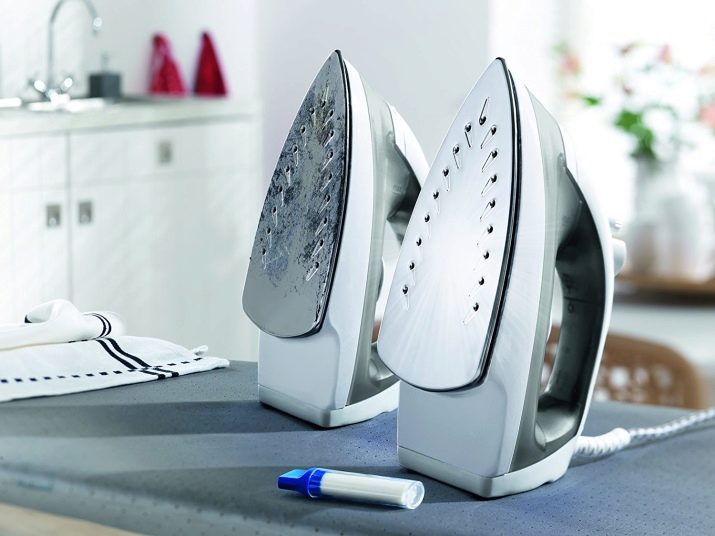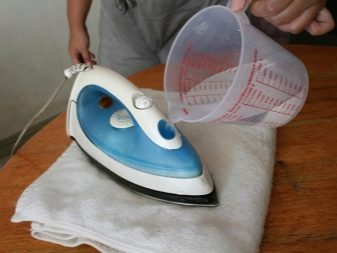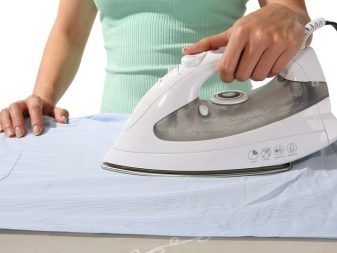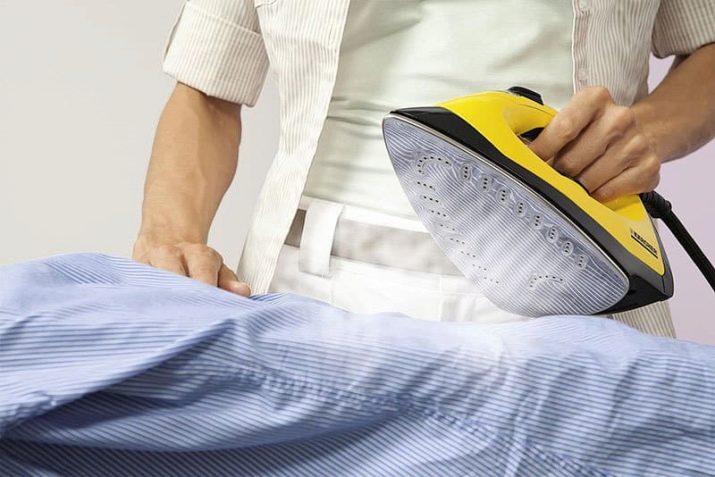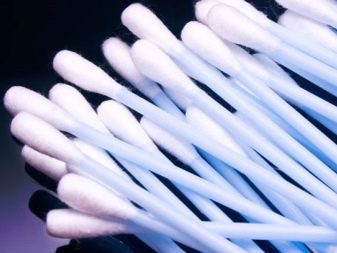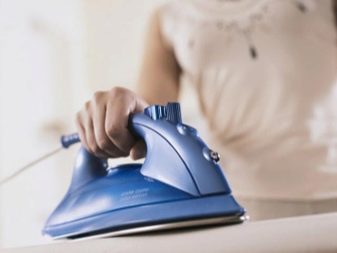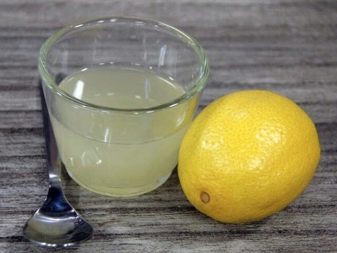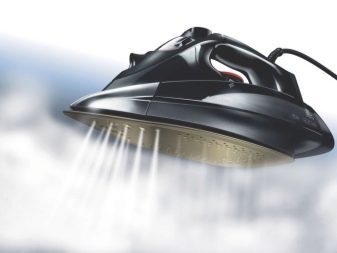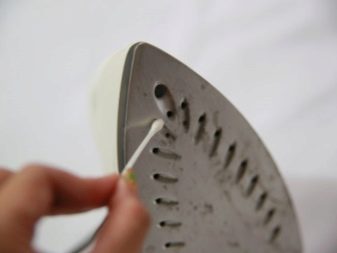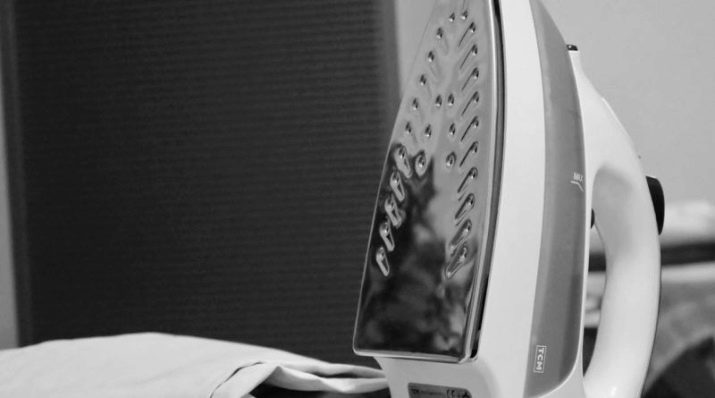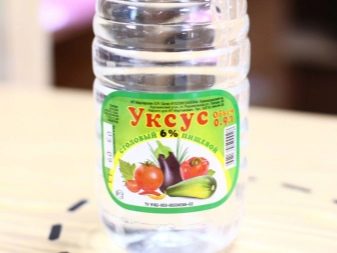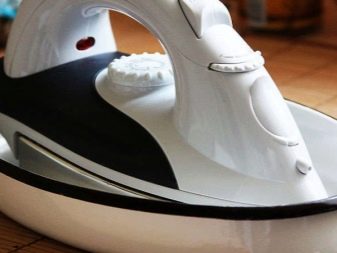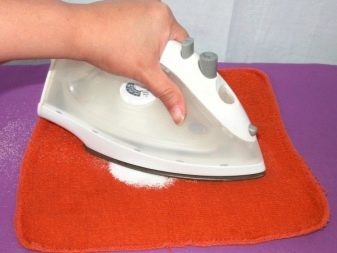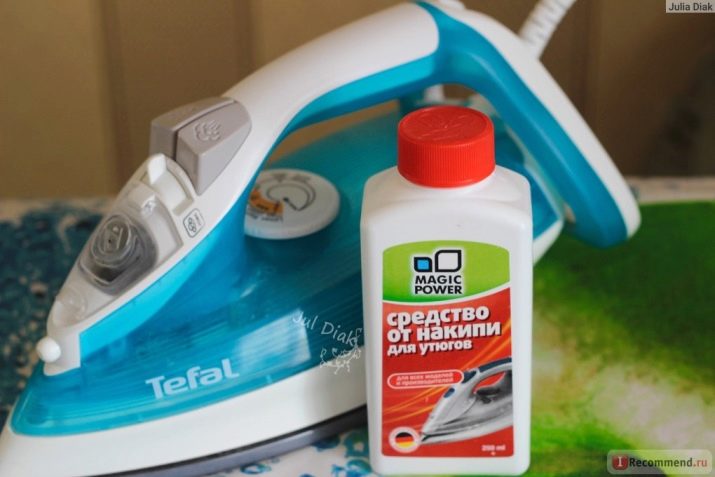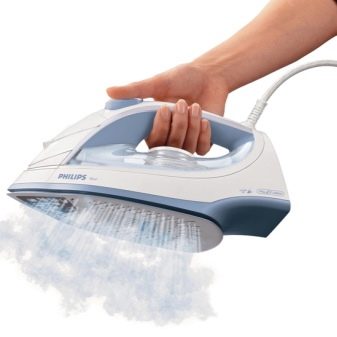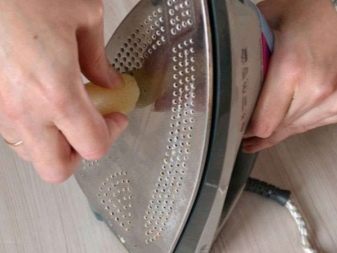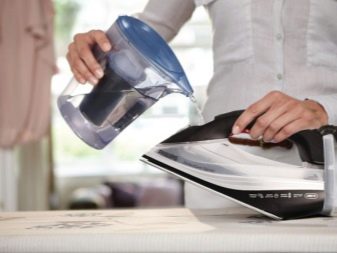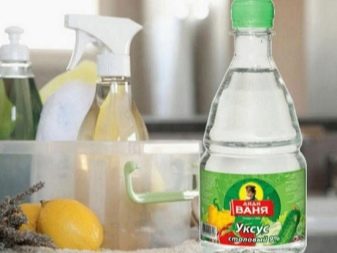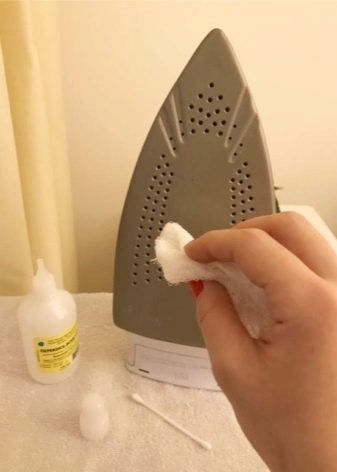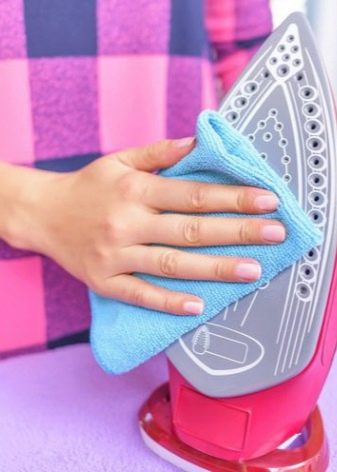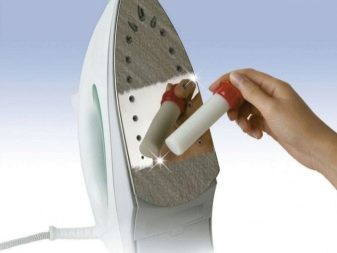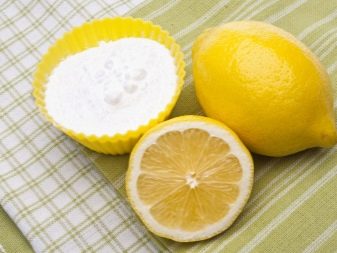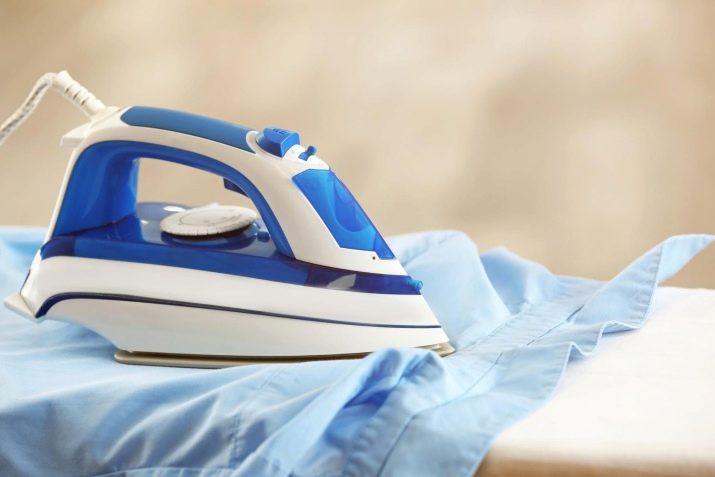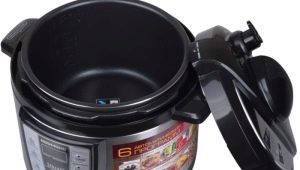How to clean the iron from scale?

Iron - an indispensable thing, without which it is almost impossible to do. Modern manufacturers offer all sorts of models of irons, which will help ease the life of the whole family. Regardless of the quality of products, there are certain rules of care for them, observing that you can extend the life of the equipment for several years. In this article, you will learn how to scum iron using simple and affordable tools.
Why do pollution appear?
Any technique sooner or later comes into disrepair, and irons are no exception. The main cause of damage is limescale, which forms on the bottom of the device and inside the water tank. Too frequent use of the iron can lead to the formation of scale even on a recently purchased appliance.
Usually, the water in the water supply system is quite tough, so the difficulties in using water-consuming equipment to residents of large cities are familiar firsthand. Even a multi-stage purification is not able to soften the water and completely eliminate the presence of salts in the water.
The only way to reduce the amount of scale formation at home is to use distilled water for ironing. Filters and the use of bottled water are of great help, but even this does not guarantee getting rid of lime deposits for good.
Few people know what is dangerous scum. It conducts the temperature badly - about 10 times worse than the steel from which the iron body is made. The more layer of scale on the sole, the harder it will be to iron things. In this case, the metal of the iron will overheat, and it will take much more time to heat the water. As a result - a decrease in the functionality of the device, metal curvature, difficulty of the ironing process.
Common remedies
Before you start cleaning the iron, you need to determine which method of cleaning is suitable for your equipment.
Many housewives prefer home-made cleaning methods, especially since in each apartment there will always be one or two means that will help to quickly and simply remove scale from the appliance. Each of them has its pros and cons and is effective in its own way. To find out which method is right for you, we suggest that you familiarize yourself with the most effective folk iron cleaning methods.
Lemon acid
Citric acid can be found in any housewife, so this method can be called the most popular of all.
First, you should carefully examine the heating sole of the iron, pay special attention to the steam outlet.. The accumulation of scale inside the holes can be seen with the naked eye, and if it is too much, then it is better to start the procedure with them. Otherwise, there will be difficulties in cleaning the water tank.
You will need:
- syringe;
- several cotton swabs;
- basin for draining dirty liquid.
To begin with, dilute citric acid with hot water and stir. This should be done as carefully as possible, since the ingress of undissolved crystals into the tank is unacceptable. If the holes are too clogged, you can blot them with a cotton swab dipped in the resulting solution.
To clean the water tank can be as follows. The solution with citric acid must be poured into it through holes on the surface with a syringe. The rest of the liquid is poured in the usual way. Next, you need to heat the iron to a high temperature and leave it in a horizontal position for 5-10 minutes without removing the plug from the outlet.
The cleaning procedure is not at all calm - at this point steam or pungent odor can go, the iron can begin to “hiss”.
Over time, you need to rinse the tank with clean water and treat the surface of the sole with gauze or a soft cloth. To do this, pour water inside and iron the usual way unnecessary rags. If traces of scale are still visible, the procedure should be repeated.
remember, that acid solution should not be too concentrated, even if the holes on the surface are too clogged. Eliminate scale can only be thoroughly rubbing the holes, and too high content of citric acid in the solution can damage the internal parts of the device and even cause equipment failure.
The same can be repeated with lemon juice. It is necessary to squeeze the juice from the lemon into a glass of water, then pour the resulting liquid into the iron tank. It is necessary to warm it up to full capacity and turn on steam mode. It is best to do this over a bath or some kind of tank. As a result, all the scum should come out of the iron.
It is necessary to continue the manipulations until all the water comes out of the iron. Then cool the device and repeat the procedure with clean water. This cleaning method was especially loved by the housewives for safety, because natural lemon does not contain any harmful substances.
Vinegar
Acetic acid does an excellent job with scorching and scaling, but is considered a more aggressive agent, so it can only be used to clean the bottom surface of the product.
To wipe the sole of the iron can be a cotton pad or a soft cloth dipped in vinegar.
The cleaning procedure is as follows:
- iron needs to be heated;
- cotton wool or cloth should be moistened in undiluted vinegar;
- Carefully walk on the bottom surface of the device;
- using cotton swabs to wipe holes.
At the end of the manipulation, it is necessary to walk with an iron on some unnecessary fabric to remove the remnants of contamination.
During cleaning, the iron should not be unplugged: the higher the heating temperature of the device, the more efficient the procedure.
Experts recommend cleaning the iron every two to three monthsThis will help to increase the life of the equipment and will eliminate problems during ironing. Remember that it is impossible to pour vinegar inside the iron tank - it can corrode the rubber parts.
Allowed to use trays with vinegar. To do this, you will need an unnecessary baking sheet or container and two slats on which you can put a heated iron.
The procedure is as follows:
- boil water and mix with a little vinegar;
- pour the solution into the container so that it covers part of the sole;
- leave the device for about an hour;
- to enhance the effect, the pan can be put on a gentle fire.
To avoid injuries and burns, be careful during this procedure!
Vinegar works well with soda. Such a home method of cleaning an iron is good because all its components are always at hand.
For this you need:
- cover the table with coarse matter (you can take a towel);
- pour a little soda;
- carefully crush lumps;
- pour a little vinegar on the soda. For greater effect, you can add a few drops of ammonia. If the house does not have vinegar, only ammonia is allowed;
- rub the heated iron on the cloth. The resulting foam cleans well the sole of the device from various contaminants and burns.
- If necessary, repeat the procedure several times.
It is necessary to carry out manipulations with vinegar in a well-ventilated area, otherwise there is a risk of poisoning with acetic acid vapors.
"Antinakipin"
Manufacturers of household chemicals are trying to facilitate home life and create effective tools to quickly and easily clean the iron from scale. The use of chemicals greatly simplifies the cleaning process of the device and makes it simple and safe.
To date, all cleaning products offered on the market are composed of acids that can cope with almost any dirt and scum.
Before use, be sure to read the instructions for use and strictly follow the recommendations of the manufacturer.
One of these products is Antinakipin, which removes scale well and is distinguished by its low price. The cleaning technique is a little different from the above:
- dilute "Antinakipin" with water, observing the proportions indicated in the instructions;
- fill the device into the tank and turn on the temperature at full capacity;
- when the iron warms up, turn on the steam;
- foam should appear from the steam holes;
- wait for the device to cool and rinse the tank in the case with clean water.
Compared with folk remedies, this method is more expensive, but the use of a chemical agent allows you to speed up the procedure and makes it as efficient as possible.
Specially designed tools for cleaning irons will help to avoid damage, since their composition is specially selected for this type of equipment.
What to choose?
There are many ways to clean the irons from scale and other contaminants. Each of them has its own advantages and disadvantages.
Chemicals save time, but using them It is important to take precautions and avoid contact with the skin of the hands. Do not use rough abrasives and rub the surface of the iron with a stiff brush or metal brush - this can damage the sole. It is better to choose soft cloths and gentle detergents designed for this purpose.
In addition to the above methods of cleaning, there is a whole list of folk remedies using soda and detergent, laundry soap, hydroperit, salt, toothpaste and even a paraffin candle - what to choose, you decide.
Do not forget that the cleaning method must correspond to each individual model of the device. Some devices have a delicate surface that is very easy to spoil with salt or soda, so in such cases it is best to give preference to more gentle methods.
When using wax candles for cleaning, make sure that when it does not clog in the steam holes of the device. Do not forget to put the pan under the bottom, as when heated, the candle will melt on the iron and flow down. You can avoid getting wax into the holes by tilting the iron vertically.
Regardless of which folk method you used, after completing the procedure, make sure that there were no residues of cleaning agent on the sole, and only then proceed to ironing things.
How to clean?
Most of the current steam irons are equipped with a special self-cleaning system, using which one can significantly increase the service life of devices. In addition, it is the most functional way to clean this technique from the inside.
The self-cleaning procedure of the device occurs in several stages:
- it is necessary to pick up a deep tank, preferably a metal one;
- fill the tank with water, you can add a purchaser for this purpose;
- the iron must be turned on at full power for warming up;
- after it warms up, unplug it and turn on the self-cleaning mode. At this point, the device must be kept above the basin or bath. The self-cleaning key is located on the body of the iron. Pressing it will trigger the release of steam and water from the tank, along with which fragments of plaque will come out. To make the procedure more effective, you can shake the iron slightly;
- To completely remove the scale inside the device, you can repeat the procedure a couple of times.
Ceramic surfaces
The popularity of ceramics coated irons is due to the practicality of operation and ease of maintenance. These irons practically do not spoil things, they are easy to clean from contamination, besides, they have a long service life.
In due course any equipment becomes outdated. It is common for irons to accumulate limescale on the sole and inside the water tank. On the surface often appear stains from clothes, which not only complicate the process of ironing clothes, but also can be imprinted on things.
There are several ways to remove dirt and bloom from a ceramic coating:
- Glass ceramics agent. This is one of the most affordable and cheap ways to clean dirt and limescale. Method of application: apply the solution to the cold surface of the iron and rub it with a soft sponge until the surface is completely cleaned. Then remove the residues with a cloth dipped in warm water.
- Vinegar + ammonia. Method of application: apply ammonia on the cold surface of the sole and use a sponge or soft cloth to walk across the entire surface. Moisten a rag in vinegar and repeat the manipulation, heat the iron and turn on steam mode. This will help to eliminate scum even in the openings on the sole.
- Hydrogen peroxide. This is another easy and affordable way to remove scale from the surface. Method of application: moisten a cotton swab with peroxide and treat the working surface. To enhance the effect, you need to turn on the iron, but make sure that the surface does not get very hot.
- Salt. With it, you can easily clean the ceramic iron from too much burn. Method of application: put a thin layer of fine salt on a sheet. Turn on the iron and smooth with a slow motion to iron the sheet with salt. Coarse salt cannot be used - ceramics will be easily scratched.
- Hydroperid tablet. With its help you can easily get rid of heavy pollution on the surface of the ceramic iron. How to use: heat the device to the maximum temperature and disconnect from the outlet. Rub the entire surface of the sole with a tablet, paying particular attention to old spots. Remove tablet residue with a damp cloth. Using this method, open a window or balcony so that the vapors of the hydroperiod will disappear.
Teflon coated
Teflon is a unique material widely used in the domestic and industrial fields. It has high strength properties and an incredibly slippery surface. Teflon-coated irons have long become the favorite models of hostesses. Teflon is just perfect for ironing - it does not cling to textiles, so it is suitable even for the most delicate fabric, it is not erased and does not deteriorate with proper care. The shelf life of irons with Teflon coating is longer than ceramic. However, such models over time lose their original properties and require cleaning.
Since Teflon is a very brittle material, the iron should be cleaned carefully with the use of harmless means. It is important not to scratch the Teflon layer, otherwise in the future the device may be broken.
It is strictly forbidden to use soda and coarse salt. It is better to try to eliminate dirt and lime deposits using hydrogen peroxide or a special chemical agent. You will also need a soft cloth or sponge for more effective cleaning and cotton swabs for cleaning the surface with holes.
Useful recommendations
Secrets of thrifty housewives:
- Ammonia is a universal cleaner. It as well as possible is suitable for teflon coatings, perfectly removing dirt, scum, stains. After applying the sole of the iron should be washed with warm water and wipe dry.
- Mixing baking soda with 2-3 drops of detergent and lemon juice, you can make a shock mixture to remove old stains. It is applied with a thin layer over the entire surface using a cotton swab or roller. To enhance the effect, you can wait about half an hour, and then rinse with warm water.
- Soft fleecy is best for removing stains. You can use microfiber cloths - they absorb moisture well and are easy to use.
- In no case should sandpaper, a knife or other sharp objects be used to clean the surface of irons. They will scratch the surface and may cause the device to malfunction.
- Teflon coating should not be rubbed too hard. This will lead to the formation of microcracks and damage to the entire surface in the future.
- The pencil cleaner will help to cope with the most capricious surface. Modern manufacturers offer a wide range, among which you can easily choose the best option for themselves. The pencil is applied only on the heated surface. After use, you should iron the unnecessary rags and wipe the cooled surface of the iron with a damp cloth.
The formation of a burn on the surface of an iron can be prevented by following a few rules:
- observe temperature condition for each type of fabric;
- delicate items, which include wool, silk, nylon, polyester, lace, cashmere, knitwear must be ironed through a wet cloth;
- after each ironing it is necessary to wipe the surface of the iron with a damp cloth;
- Only purified water should be poured into the water tank. Suitable distilled or filtered water - this will help reduce the formation of scale.
How to clean the iron from the scale inside, see the next video.
